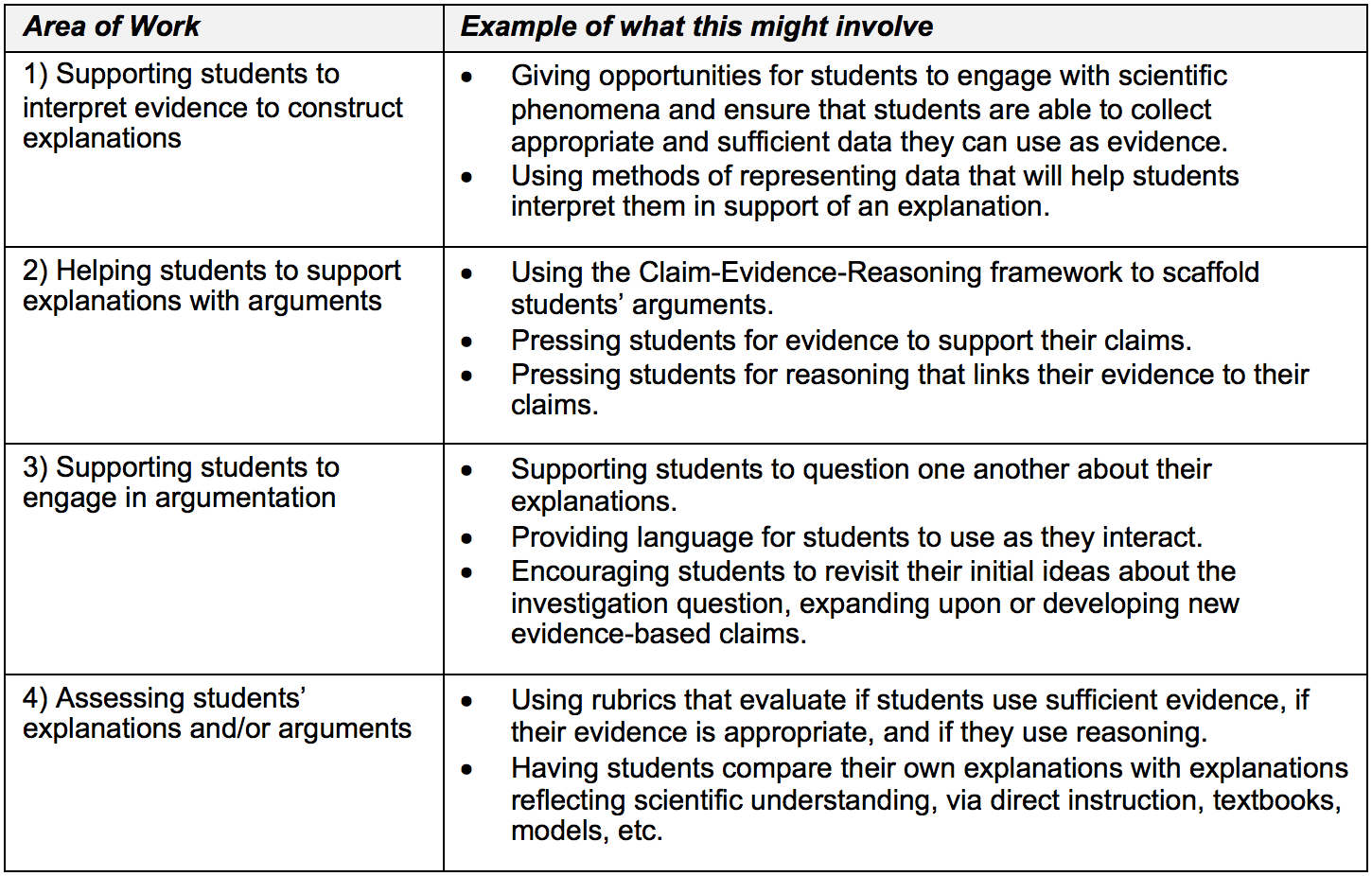What is explaining and modeling content in science?
In science, constructing explanations is a key part of scientific practice. Consequently, for the high-leverage practice of explaining and modeling content we focus on how teachers can support students to construct explanations rather than on teachers’ ability to explain content to students. Constructing explanations and supporting them with arguments are two closely related scientific practices which students should engage in. One goal of science is to create explanations for why or how natural phenomena occur. These explanations are developed and supported through a process of argumentation negotiating different interpretations of evidence. Science teachers must be able to support students to construct their own explanations and arguments by using the data they collect during investigations.
In the classroom, this entails teachers providing support for students to make sense of scientific phenomena by developing claims that answer investigation questions, transforming data that have been collected to serve as evidence for the claim, and identifying science principles or big ideas that can be used as reasoning to connect the claim and the evidence. Throughout this process, the teacher should provide support for students to engage in scientific argumentation as they work to develop the best explanation. The teacher provides tools and strategies for students to critique one another’s claims, support their own claims with evidence, evaluate the relevance of data, and revise their claims or arguments based on other students’ input.
Why work on supporting students to construct explanation and build arguments?
When students are supported to construct scientific explanations and build arguments, they are engaging in two key science practices which can help them understand the process through which scientific knowledge is generated.
In addition, students can gain an improved understanding of science content when they work to generate their own explanations of phenomena. Discussing the strengths and weaknesses of opposing explanations through argumentation can lead to a deeper understanding of the science content behind phenomena.
How do teachers support students to construct explanation and build arguments?
In a lesson on energy transfer, a teacher might ask students to develop an explanation for what will happen after two substances of different temperature come into contact with one another. Students are responsible for making a claim that directly answers the question, and supporting that claim with evidence from the investigation (e.g., temperature data) and reasoning (e.g., scientific principles related to energy transfer). As students work together to answer the claim, the teacher might encourage students to engage with each other’s ideas. By helping students to critique, revise and reach consensus on their ideas, the teacher is supporting the scientific practice of argumentation.
What are the elements of the practice?
The high-leverage practice of supporting students to construct scientific explanations and build arguments is different than the high-leverage practice of explaining and modeling content, practices, and strategies. Although teachers need to be able to clearly explain content, this high-leverage practice focuses on the work teachers do to support students in the crucial disciplinary work of constructing their own scientific explanations of phenomena, not on how well teachers explain content to students.

How do we support novice teachers to learn this practice?
In working on this practice in teacher education, we focus on helping novice teachers develop clear definitions and accurate understandings of claim, evidence and reasoning to use in their classrooms. Like students, novice teachers may particularly struggle with reasoning. Further, we provide opportunities for them to explore and practice the work of supporting students in constructing explanations. We distinguish explanation from argumentation to emphasize the different purposes these practices serve, though with novice teachers, we don’t worry as much about this distinction. Finally, we help novice teachers to practice assessing explanations and/or arguments, allowing them to more deeply understand these practices and to become generally more comfortable using rubrics.
The practices of explanation and argumentation are closely related, often happen together, and can be difficult to disentangle. The goal of a scientific explanation is to answer questions about why something happens, and to improve our understanding of that phenomenon. There are many types of scientific explanations, but in general, students’ explanations in science should employ scientific “laws”, provide some form of causal account, apply statistical induction, or unify multiple phenomena under a single model. The kind of explanation that a teacher helps students construct will depend on the complexity of the phenomena and the students’ grade level. When constructing an explanation, scientists often engage in debates in which they refine claims until they reach a consensus. Consequently, students will also engage in the two practices simultaneously. While the difference between the two is important, because of time constraints we do not work with our novice teachers on teasing out these subtle differences. Instead, we focus on ensuring that novice teachers support their students to include the essential elements of an argument (claim, evidence, and reasoning) as they work to develop an explanation.